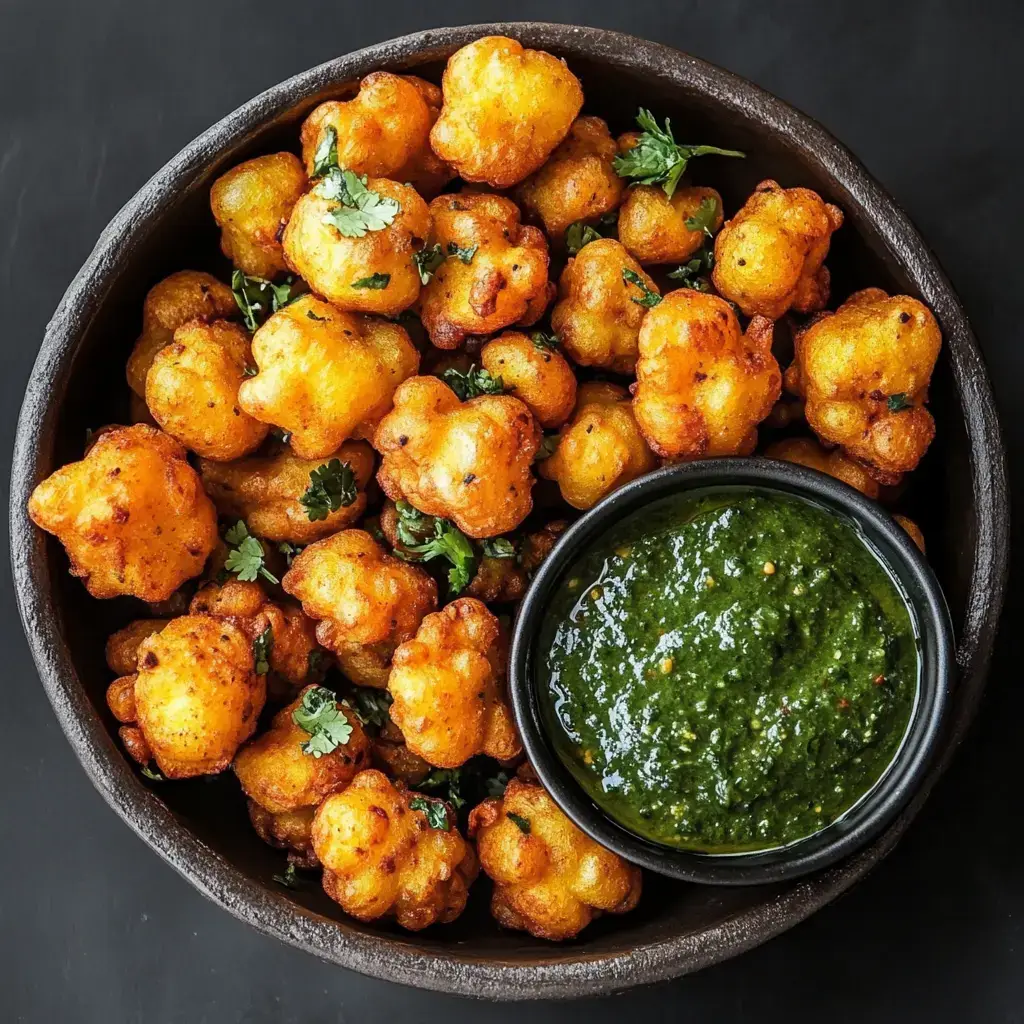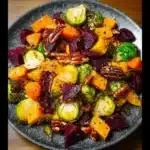Pakoras are a quintessential Indian snack, beloved for their crispy texture and flavorful taste. These delightful fritters are made by coating vegetables in a spiced chickpea flour batter and deep-frying them to golden perfection. In this article, we will delve into how to make delicious vegetable pakoras served with chutney, along with tips, serving suggestions, and more. Whether you’re a seasoned cook or a beginner in the kitchen, this guide will help you create the perfect pakoras that are sure to impress.
Ingredients
To make vegetable pakoras, you need a handful of simple ingredients that are often found in the pantry. Here’s what you’ll need:
- 1 cup chickpea flour (also known as gram flour or besan)
- 1/2 tsp turmeric powder
- 1/2 tsp cumin seeds
- 1/2 tsp chili powder
- Water (as needed to make a smooth batter)
- 2 cups mixed vegetables (such as potatoes, onions, and spinach, chopped into bite-sized pieces)
- Salt (to taste)
- Oil (for frying)
- Store-bought mint or tamarind chutney (for serving)
These ingredients come together to create a dish that is not only tasty but also packed with nutrients.
Instructions
Preparing vegetable pakoras is straightforward and can be accomplished in a matter of minutes. Here is a step-by-step guide to making these delightful snacks:
- Prepare the Batter: In a large mixing bowl, combine the chickpea flour, turmeric powder, cumin seeds, chili powder, and salt. Gradually add water while stirring continuously to form a smooth and thick batter. Ensure there are no lumps.
- Add the Vegetables: Gently fold the chopped mixed vegetables into the batter until they are well coated. The choice of vegetables can be adjusted according to your preference and availability.
- Heat the Oil: In a deep pan or wok, heat the oil over medium heat. To test if the oil is ready, drop a small amount of batter into the oil; it should sizzle and rise to the surface.
- Fry the Pakoras: Carefully drop spoonfuls of the vegetable batter into the hot oil. Fry the pakoras in batches, ensuring they do not overcrowd the pan. Cook them until they are golden brown and crispy on all sides, about 3-4 minutes per batch.
- Drain Excess Oil: Use a slotted spoon to remove the pakoras from the oil and drain them on paper towels to absorb any excess oil.
- Serve: Arrange the pakoras on a serving plate and enjoy them hot with store-bought mint or tamarind chutney for a tangy dip.
Nutrition Facts
Understanding the nutritional content of your food is essential for maintaining a balanced diet. Here are the nutrition facts for a typical serving of vegetable pakoras:
- Calories: 200
- Protein: 6g
- Carbohydrates: 30g
- Fat: 8g
- Fiber: 5g
These pakoras are a moderate source of calories and provide a good balance of protein, carbs, and fats, making them a satisfying snack option.
How to Serve
Vegetable pakoras are not only a delightful snack but also an incredibly versatile dish that can elevate any dining experience. Their crispy texture and rich flavor can adapt to various occasions and preferences, making them a beloved choice in many culinary contexts. Below are some comprehensive serving suggestions that showcase the versatility of vegetable pakoras.
As an Appetizer
Serving vegetable pakoras as an appetizer is a fantastic way to kick off any gathering or dinner party. Their crispy exterior and soft, flavorful interior make them an irresistible starter that can set the tone for the meal. You can present them in a variety of styles:
- Platter Presentation: Arrange the pakoras on a large serving platter, garnished with fresh coriander leaves or sliced onions. This not only creates an inviting visual appeal but also encourages guests to help themselves.
- Individual Portions: For a more formal setting, consider serving individual portions of pakoras in small bowls or on stylish appetizer plates. This allows for a refined presentation while providing guests with their own serving.
- Mixed Variety: Offer a selection of different types of pakoras—such as onion, potato, spinach, and cauliflower—to cater to varying tastes and preferences. This variety can keep the appetizer course exciting and engaging.
With Chutney
Pairing vegetable pakoras with chutney is a quintessential aspect of enjoying this popular snack. The contrast between the crispy, savory pakoras and the refreshing, tangy chutneys enhances the overall flavor experience. Some popular chutney options include:
- Mint Chutney: Made from fresh mint leaves, cilantro, green chilies, and spices, mint chutney adds a cool, zesty flavor that perfectly complements the richness of the pakoras. It’s particularly refreshing and can be served chilled.
- Tamarind Chutney: This sweet and tangy chutney, made from tamarind pulp and spices, adds a delightful contrast to the savory notes of the pakoras. Its complex flavor profile can elevate the dish and offer a unique taste experience.
- Yogurt Sauce: A cooling yogurt sauce, perhaps infused with spices like cumin and coriander, can also be an excellent accompaniment. The creamy texture of the yogurt provides a soothing balance to the crunchiness of the pakoras.
In a Meal
Vegetable pakoras can seamlessly be integrated into a larger Indian meal, enhancing the overall dining experience. They can serve various roles within the meal:
- Side Dish: Consider serving pakoras alongside hearty curries, fragrant basmati rice, and warm naan. Their crispy texture contrasts beautifully with the creamy and rich elements of a curry, providing a satisfying variety of textures and flavors.
- Platter or Thali: For a more traditional presentation, include pakoras in a thali or platter that features a range of dishes. This communal style of dining encourages sharing and creates a festive atmosphere, allowing everyone to sample a bit of everything.
- Salad Component: Incorporate pakoras as a crunchy topping for salads, adding an exciting twist to the dish. Their flavor can complement fresh vegetables and dressings, creating a unique salad experience.
With Tea
In Indian culture, enjoying pakoras with a cup of hot chai tea is a beloved tradition, especially during the rainy season or as an afternoon snack. This combination offers an indulgent yet comforting experience:
- Chai Pairing: The warmth and spice of chai tea—made with black tea, milk, and a blend of spices such as cardamom, ginger, and cinnamon—pairs beautifully with the savory flavors of pakoras. The contrasting temperatures of the hot tea and the crispy pakoras create a delightful sensory experience.
- Tea Time Ritual: Set up a cozy tea time where guests can enjoy pakoras along with their chai. Consider adding other snacks like biscuits or sandwiches to create a more extensive tea service, making it a perfect mid-day retreat.
- Informal Gatherings: Pakoras with chai can also be enjoyed during informal gatherings with friends or family, making it an ideal option for casual get-togethers. This simple yet satisfying combination encourages conversation and relaxation.
Conclusion
In conclusion, vegetable pakoras are a wonderfully versatile dish that can be enjoyed in numerous ways. Whether as an appetizer, paired with flavorful chutneys, included in a larger meal, or savored alongside a cup of tea, these delightful snacks can cater to various occasions and preferences. Their adaptability not only highlights their appeal but also makes them a staple in many households, ensuring that there’s always a place for pakoras on the table.
Additional Tips
To elevate your pakora experience and make them even more delightful, consider the following comprehensive tips:
Experiment with Vegetables
One of the beautiful aspects of pakoras is their versatility. While potatoes and onions are traditional favorites, do not hesitate to explore a variety of vegetables to find your perfect combination. Here are some excellent choices:
- Cauliflower: Break into small florets and coat them in the batter. The delicate texture becomes wonderfully crispy, and the flavor pairs well with the spices.
- Bell Peppers: Sliced into strips or rings, bell peppers add a sweet crunch. Their vibrant colors can also enhance the visual appeal of your platter.
- Eggplant: Slices of eggplant absorb flavors beautifully and, when fried, offer a creamy center that contrasts nicely with the crispy exterior.
- Spinach: Leafy greens like spinach can be chopped and mixed into the batter for a nutrient boost and a subtle earthy flavor.
- Zucchini: Thinly sliced or grated zucchini can add moisture and a mild taste, making for a light and refreshing pakora.
- Paneer: Cubes of paneer can be coated in the batter for a protein-rich option that’s especially satisfying.
Feel free to mix and match these vegetables or even add some chopped herbs like cilantro or mint for an extra burst of freshness.
Spice it Up
The beauty of pakoras lies in their ability to be customized to your palate. Adjusting the spice level is crucial for achieving the flavor profile you desire:
- Chili Powder: Start by adding a small amount of chili powder and taste the batter. Gradually increase until you reach your preferred level of heat.
- Additional Spices: Consider incorporating other spices like cumin seeds, ajwain (carom seeds), or garam masala to create a more complex flavor. These spices not only enhance the taste but also provide aromatic qualities.
- Fresh Green Chilies: For those who enjoy a fresh kick, finely chopped green chilies can be added directly to the batter. This will give your pakoras a vibrant flavor and a pleasant heat.
Ensure Crispiness
Achieving that perfect crunch is essential for delicious pakoras. Here are some expert tips to ensure maximum crispiness:
- Rice Flour: Adding a tablespoon of rice flour to your chickpea flour (besan) batter can significantly enhance the crispiness. Rice flour helps create a light, airy texture that’s irresistible.
- Baking Soda: A pinch of baking soda can also be added to the batter to help aerate it, leading to a puffier, crispier result.
- Right Temperature: Ensure that your oil is hot enough before adding the pakoras. If the oil is too cool, they will absorb excess oil and become soggy. A good test is to drop a small amount of batter into the oil; it should sizzle and float to the surface immediately.
Serve Fresh
Pakoras are best enjoyed immediately after frying while they’re still hot and crispy. However, if you need to prepare them in advance, here are some tips to maintain their texture:
- Reheating: If you have leftovers, avoid the microwave as it can make pakoras lose their crispiness. Instead, preheat your oven to about 375°F (190°C), place the pakoras on a baking sheet, and heat for about 10-15 minutes, or until they are warmed through and regain their crunch.
- Serving Suggestions: Enhance your pakora experience by serving them with a variety of dipping sauces. Mint chutney, tamarind chutney, or a yogurt-based dip can complement their flavors beautifully. Adding sliced onions or lemon wedges as garnish can also enhance the presentation and flavor.
By incorporating these tips into your pakora-making process, you can create a delightful snack that is customized to your taste and enjoyed by all. Whether for a casual gathering or a festive occasion, these enhancements will ensure your pakoras are a hit!
FAQs
Here are some frequently asked questions about making vegetable pakoras:
1. Can I bake pakoras instead of frying them?
Yes, you can bake pakoras as a healthier alternative. Preheat your oven to 400°F (200°C) and place the pakoras on a baking sheet. Brush them with a little oil and bake for 20-25 minutes, flipping halfway through.
2. What other types of chutney can I serve with pakoras?
In addition to mint and tamarind chutney, you can serve pakoras with coriander chutney, garlic chutney, or even a yogurt-based dip.
3. Can I make pakoras gluten-free?
Pakoras are naturally gluten-free as they are made with chickpea flour. Just ensure any added ingredients or accompaniments are also gluten-free.
4. How do I store leftover pakoras?
Store leftover pakoras in an airtight container in the refrigerator for up to 2 days. Reheat them in the oven before serving to regain their crispiness.
Conclusion
Vegetable pakoras with chutney are a timeless snack that seamlessly blends crunch, flavor, and versatility. Perfect for casual tea-time breaks, festive gatherings, or as a savory addition to any meal, they cater to both traditional and modern palates. With their golden-brown crispiness and the delightful tang of chutney, pakoras promise a treat that’s not just satisfying but also packed with flavor.
Making pakoras at home allows you to explore endless variations, from classic onion and potato to vibrant spinach or mixed vegetable blends. The key is the combination of fresh ingredients and a well-balanced spiced batter. Whether enjoyed piping hot with a steaming cup of chai or as part of a festive spread, pakoras bring warmth and comfort to the table.
Now is the perfect time to gather your ingredients, mix up a batter, and embrace the joy of making these beloved fritters. Their simplicity and versatility make them a dish worth mastering. So, don’t wait—fire up your frying pan, get creative with your flavors, and share this delectable snack with loved ones. Enjoy the magic of homemade pakoras, and happy cooking!
Print
Vegetable Pakoras with Chutney
Ingredients
To make vegetable pakoras, you need a handful of simple ingredients that are often found in the pantry. Here’s what you’ll need:
- 1 cup chickpea flour (also known as gram flour or besan)
- 1/2 tsp turmeric powder
- 1/2 tsp cumin seeds
- 1/2 tsp chili powder
- Water (as needed to make a smooth batter)
- 2 cups mixed vegetables (such as potatoes, onions, and spinach, chopped into bite-sized pieces)
- Salt (to taste)
- Oil (for frying)
- Store-bought mint or tamarind chutney (for serving)
These ingredients come together to create a dish that is not only tasty but also packed with nutrients.
Instructions
Preparing vegetable pakoras is straightforward and can be accomplished in a matter of minutes. Here is a step-by-step guide to making these delightful snacks:
- Prepare the Batter: In a large mixing bowl, combine the chickpea flour, turmeric powder, cumin seeds, chili powder, and salt. Gradually add water while stirring continuously to form a smooth and thick batter. Ensure there are no lumps.
- Add the Vegetables: Gently fold the chopped mixed vegetables into the batter until they are well coated. The choice of vegetables can be adjusted according to your preference and availability.
- Heat the Oil: In a deep pan or wok, heat the oil over medium heat. To test if the oil is ready, drop a small amount of batter into the oil; it should sizzle and rise to the surface.
- Fry the Pakoras: Carefully drop spoonfuls of the vegetable batter into the hot oil. Fry the pakoras in batches, ensuring they do not overcrowd the pan. Cook them until they are golden brown and crispy on all sides, about 3-4 minutes per batch.
- Drain Excess Oil: Use a slotted spoon to remove the pakoras from the oil and drain them on paper towels to absorb any excess oil.
- Serve: Arrange the pakoras on a serving plate and enjoy them hot with store-bought mint or tamarind chutney for a tangy dip.
Nutrition
- Serving Size: 1 normal portion
- Calories: 200
- Fat: 8g
- Carbohydrates: 30g
- Fiber: 5g
- Protein: 6g





